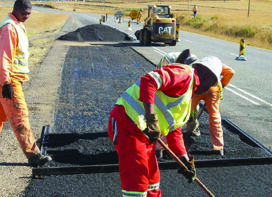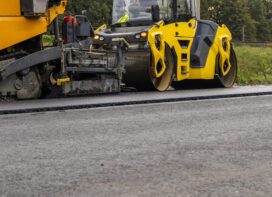What makes a journey safe? Better drivers or better roads? While we agree that India’s road safety record needs to improve, how are we going to go about it remains a matter of debate. Trafficinfratech spoke to enforcement and transport authorities of various States to find out the systems being put in place for making the roads safe and commutable.
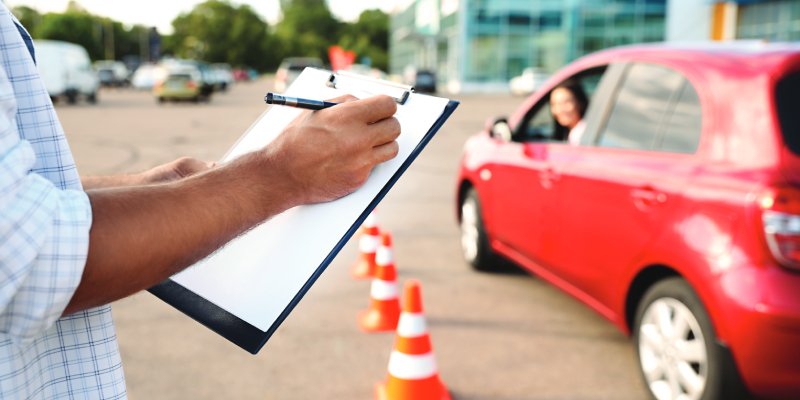
The situations we have in our country demand resilient and robust road safety products and solutions. We have a unique set of challenges on Indian roads that are vastly different from road circumstances globally. Safety on our roads today is impacted by speeding, driving under the influence of alcohol, traffic management systems that are not geared for Indian conditions, lack of training for driver behaviour, and poor infrastructure.
Addressing on the Road Safety Week, Union Minister for Road Transport and Highways Nitin Gadkari said, “The Ministry is committed to reduce road fatalities and injuries and has undertaken multiple initiatives across all 4Es of Road Safety i.e. Engineering, Enforcement, Education and Emergency Care. The ministry is taking all necessary efforts to reduce road accidents by 50 percent before the end of 2025.”
If we look at the share of accidents on the roads in India, a third is on national highways, a third on state highways and a third on city roads. This indicates that our problems are complex.
If we further analyse fatality data generated by the various states, it becomes evident that states with better infrastructure tend to have a higher rate of accidents. Tamil Nadu which has excellent road infrastructure also has the highest road toll in the country, contributing to14.9% of the accidents in India. Just five states contribute over 50% of road fatalities in India – Tamil Nadu, Madhya Pradesh, Karnataka, Maharashtra and Kerala. Each of these has unique driver behaviours and road safety challenges and one common solution will not be able to result in any reduction in the death toll.
Need for Driver training
Road safety continues to be a major developmental and public health concern in India. Driver should be aware of the conditions of one’s vehicle– conditions of tyres, alignment of wheels, headlights, indicators, brakes etc. They should be encouraged to wear helmets and cab drivers should apply seat belts.
G Janardan, ADGP- PTRI, Madhya Pradesh said that “According to the police training and research institute’s study, accidents occur because drivers are not given sufficient information about road safety. More than 12,000 people lost their lives in Madhya Pradesh during the past year. It is crucial to inform youths approaching the legal driving age about road safety in order to reduce accidents and related deaths.
“For this, physical training teachers have been selected from more than 3,000 schools of state and 1500 college teachers for training. In the course, the teachers are imparted training in which they are given the information about standard operating procedure of driving. Like driving with driving licence, insurance papers, red light traffic rule, how to take turn, how to park the vehicle, clothes while driving, use of helmet and seat belt etc.
“Several people are not aware of the penalty for violating traffic rules. If a minor is given a vehicle by the parents or someone else for driving, they may end up in prison if the court decides so and be fined Rs 25,000.”
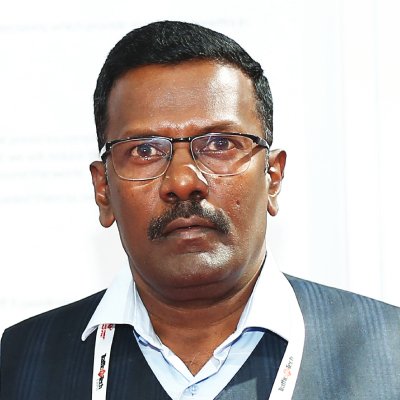
The days of breaking traffic rules with impunity by skipping the red light, tripling on two-wheelers, not wearing helmet or having wrong number plate will be a thing of the past with the adoption of high-tech digital systems like RLVD in Madhya Pradesh
–G Janardan
Promoting Road Safety Education
Traffic police in Bengaluru conduct a number of campaigns, particularly to combat road rage. As part of their education programs, the Traffic Training Institute & Research Centre and the traffic warden admissions committee conduct various campaigns to promote safe road behaviour.

Bangalore Traffic Police is trying its best to reduce traffic congestion and ensure greater safety on roads through various initiatives which have proven to be effective including – the drive against drunken driving, compulsory wearing of Helmets, Lane Discipline, campaigns against the use of mobile phones while driving, etc”
–MA Saleem
Analysing the causes of the increasing number of fatal accidents in the Bengaluru city, MA Saleem, Special Police Commissioner (Traffic) said, “Road accidents are a major cause of death on our roads. There is a need to address this since the odds of accidents are significantly higher when drunk drivers are at the wheel. Preventing accidents and maintaining the safety of road users is the basic duty and first priority of traffic police.”
The national policy on driving has been considered to create a drivers’ training school in every state. It is in very advance stage of implementation. Pradeep Gupta, ADGP, Traffic / Rail / Technical, Chhattisgarh Police, explained, “India has not been very advanced country in the field of drivers training. There is no organised system for it. There is no school which provides them certification or proper training. There is presently no system of testing drivers’ skill before issuing them a license. Many-a-times the licensing agency does not know about the driver’s skill level. The driver’s fault is a major cause of road accidents in India. We should focus on improving driver’s skill. At the same time, some attitudinal training is also needed.”

The model driving training facility ‘Institute of Driving and Traffic Research Institute’ (IDTR) at Naya Raipur achieved striking success having trained over 12,000 people, both experienced and fresh drivers. The purpose of the training modules at the institute will help inculcate road safety, better driving skills and improved road sense.”
–Pradeep Gupta
Road Safety Training Initiatives
“Road safety is a high priority area for Odisha Government”, states Sanjay Kumar Biswal, Joint Commissioner Transport, Road Safety, Government of Odisha. About 21 % of fatal road accidents in the state involve Heavy Motor Vehicles. Most of the HMV drivers are neither formally trained nor properly tested before they start driving the vehicles on the road. In view of this, State Transport Authority has started a refresher training programme ‘Vahak’ for Heavy Motor Vehicle (HMV) drivers of the state at HMV Driver’s Training Institute, Chhatia, Jajpur.
The training comprises of three-days residential programme with the modules of training on road safety, road behaviour, fuel saving, familiarization of BS-VI engine, first aid, HIV awareness, yoga and a complete health check-up. Under this project about 1500 drivers of the Odisha Mining Corporation have been trained at the driving institute till date. The Odisha government aims to scale up and train around one lakh HMV Drivers across the state.

In a bid to curb road accident fatalities caused by unruly parking of heavy vehicles on the roads, Odisha government has planned to set up truck terminals along the national and state highways”
–Sanjay Kumar Biswal
The transport department has asked the collectors to identify a minimum of 10-acre land along the national and state highways in their districts for setting up the terminals. Priority will be given to the districts which have higher accidental death rate.
Biswal further added, “Road Safety training is being provided to engineers, commercial drivers, traffic police personnel, highway engineers and planners in a systematic process through a well-planned training calendar.
With an objective to offer a scientific understanding of the accident investigation processes and its relevance, State-level Crash Investigation Training programme was organised for officials of Police & Transport department. The training focussed on how to provide authentic data of an accident which in turn facilitate the designing of policy-level interventions. The Transport department has also initiated a capacity building and training programme for road engineers of Odisha.”
While most of the fatal accidents occurred due to rash and negligent driving followed by over speeding, self-hit or fall down, wrong side driving and mobile phone usage while driving. A senior official from Mumbai traffic police, said, “We are focusing more on creating traffic awareness and education of commuters and youths. The goal of this enforcement is to combat road accidents by keeping a check on drivers under the influence of alcohol. With the use of technology and high-end gadgets, evidence-based bookings of violations, the rate of convictions has increased.
“From engineering side, various measures were taken to reduce road accidents and to ensure seamless and hassle-free traffic flow at all important junctions, putting various types of signages, central median alignments, footpath development with railing etc. The official further added, “Mumbai witnessed a decline in casualties due to road accidents by 30 per cent in 2022 compared to the previous year thanks to the awareness campaigns conducted by the traffic police. We will launch more campaigns in the coming days to make people aware about traffic norms and ways to follow them.”
Traffic responsibilities are made up of five E’s which together comprise the core of traffic, according to Anupam Kulshreshtha, ADG, Traffic and Road Safety, Uttar Pradesh. “In order to make improvements in our traffic, we have to take ownership of our own responsibilities. Thus, raising awareness among the public is essential. In our explanation, we clarified that the rules aren’t imposed on them, but rather designed to prevent traffic accumulation in areas while maintaining safety.”
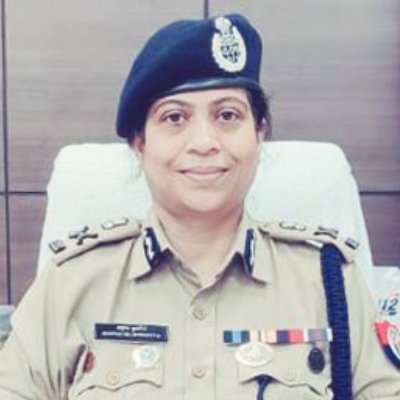
Road engineering is essential. Apart from the road quality and width, ensuring that the divider is at the appropriate height, lighting is appropriate, service lanes, laybys, CCTV setups, speed limit signs, etc., we coordinate with all of these agencies to ensure that quality is not compromised and deadlines are met.”
–Anupam Kulshreshtha
Kulshreshtha feels that every school should be able to teach their children the necessity of following traffic regulations. To support this practice, Uttar Pradesh police is working with the secretaries of the basic, secondary, and higher school education departments to include traffic as a separate subject in their curricula.
Kulshreshtha was instrumental in UP Police signing an MOU with MapmyIndia (Mappls), an Indian technology company that creates digital map data. The initiative was such a success that the Secretary of the Ministry of Road Transport and Highways addressed a letter to all of India’s states, acknowledging UP police’s experiment and advising them to do something similar, utilizing technology to ease traffic.
“We have been running our experiment for three months now, and other states have approached us for assistance. This is a platform for exchanging information with three components: traffic cops, software programmers from IT businesses (service providers), and the general public. We share information and work together through our network, which connects all 75 districts in the state.”
Citizens can also input traffic-related data to the app, following which the Mappls team sends local representatives to the designated region to check and upload the data. Training workshops are being conducted by the police for the general public, tempo and vehicle drivers, and bus drivers to become familiar with the app. The Mappls App and IRAD (Integrated Road Accident Data Base) are giving great traffic and accident insights respectively which ultimately helps in better traffic management.

Along with this, capacity building through MORTH-sponsored programs is taking place in a big way, in the state. The syllabus of traffic training in-house has also been updated and modernized with the use of technology. As Kulshrehta concludes, “Our theory of change has been to reward good drivers rather than to spend time, energy, and money identifying and punishing bad drivers.”
 TrafficInfraTech Magazine Linking People Places & Progress
TrafficInfraTech Magazine Linking People Places & Progress

